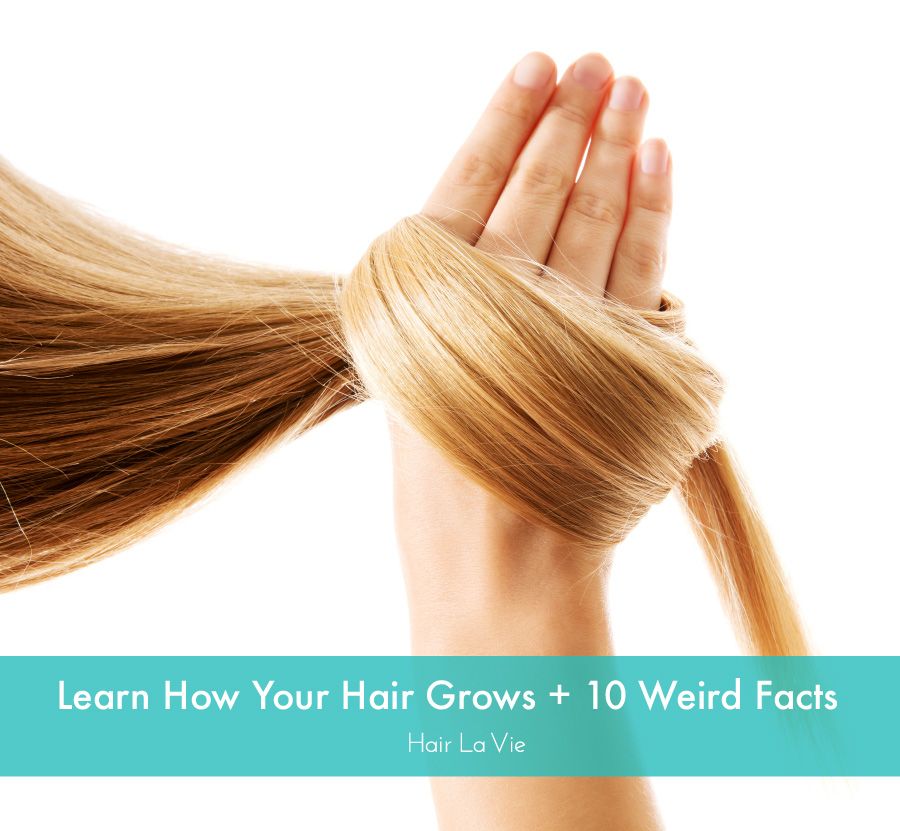Hair 101: The Science Behind Your Flowing Locks

We generally know the basics about our hair: it’s made of dead skin cells, it grows in phases, and our genetics determine its texture. But how exactly does it grow, what role does our scalp play, and what parts of our DNA determine its color? We’ll answer all of that and more in this quick educational guide. Read on to become an instant tress expert!
Any good Biology 101 class covers anatomy, so we decided to start here. The structure of our hair is strikingly complex, with countless nuances between the strands on our heads and the rest of our bodies, but we’ll focus on the main structures located on the scalp. These strands are otherwise known as terminal hair.
Scalp
The skin covering our scalp is arguably the most important feature regarding hair growth. It’s difficult –– if not impossible –– to boast lustrous hair without a healthy scalp. That’s because it contains all the nutrients necessary for growth, such as nerve endings, blood vessels and protein cells.
Follicles
Hair follicles are egg-shaped pouches located inside the scalp. At the very bottom of the follicle is the root, which is made up of cells of protein. When blood from your scalp’s vessels feeds the root, more protein cells grow until they push out of the scalp, die, and become a lustrous (if sometimes a little oily) strand of hair.
Hair shaft
The hair shaft is made of 3 layers:
Cuticle: This is the outermost layer that you’ve probably seen photos of on hair-loss infomercials. It comprises the overlapping cells that look like roof shingles pointing upward and outward.
Hair Cortex: This is the bulk of your hair shaft. It forms hardened keratin that translates into your hair’s general texture.
Medulla: The innermost layer is the most mysterious, even for experts. Scientists have to use light microscopy to see it, and even then, sometimes this layer only exists in portions of the strand, if at all.1
Our hair has different phases of growth, and understanding them is key to keeping your locks healthy and happy. There are three phases:
Anagen: This is your hair’s main growth phase. Approximately 85% of your hair is currently in anagen phase and it generally lasts 3-4 years. It’s important to supplement this phase with the right nutrients.
Catogen: This is the phase where your hair growth starts to slow. It’s a short 10-day period between growing and shedding.
Telogen: Your follicle sheds its old hair shaft and goes into a resting period of about 3 months. About ten percent of your hair is currently in this phase, which explains why you may shed about 80-100 hairs per day. After the resting period, your follicle goes back into the anagen phase and starts the process over again.2
How You Get Your Color
Two types of melanin determine your natural hair color: eumelanin and pheomelanin. Eumelanin is the dominant, dark pigment that ranges from a tiny amount, which produces light blonde hair, to a lot, producing black hair. People with large amounts of pheomelanin tend to have red hair, which can range from strawberry blonde to reddish brown. Researchers have recently discovered the gene that determines red hair: MC1R. This recessive gene is technically a mutation that produces pheomelanin throughout your tresses.3
How You Get Your Texture:
When it comes to generating hair type and texture, your genes more specifically affect the way your hair follicles are shaped. For example, an oval-shaped follicle creates a curly strand of hair. Those with straight hair have follicles with a rounded shape.4
Pregnancy: During pregnancy, excess estrogen keeps your hair in the anagen stage of growth, which results in thick, healthy strands.
Menopause: During this stage, androgen levels increase, causing thickness reduction in individual strands of hair.5
Male Hair: Men go through hormonal changes at around the same age as female menopause. The hormone that plays a key role here is a derivative of testosterone called dihydrotestosterone, and it also causes a reduction in hair shaft thickness.
Now that you know the basics about hair structure, its cycles and how certain life factors affect growth, it’s time to learn some of the stranger facts about the skin cells growing on your head.
There are a lot of weird things about our bodies, but our hair is arguably one of the strangest. It’s technically made of dead skin cells, yet it grows and gets nourishment from vitamins. You could say hair is our body’s zombie organ, and it only gets weirder from there. Below are ten more bizarre facts about our flowing tresses:
Now that you know some new facts about your hair, you probably also appreciate how important it is to keep it healthy. We recommend nourishing it with the right vitamins and topical, sulfate-free treatments to keep it strong and flourishing.
__________________________________________________________________________________
At Hair La Vie, we know that your hair is an integral part of how you present yourself to the world and shape your authentic style.
Join our private Facebook Community for a safe, human-moderated space to share your Hair Journey, discover new natural beauty, and take steps towards becoming “you” with the help of an understanding, supportive community.
Join now for instant access to livestreams, discussions, and exclusive access to new products!
Tutorials, education, and helpful tips sent right to your inbox.
JOIN THE GROUP

At Hair La Vie, we know that your hair is an integral part of how you present yourself to the world and shape your authentic style.
Join our private Facebook Community for a safe, human-moderated space to share your Hair Journey, discover new natural beauty, and take steps towards becoming “you” with the help of an understanding, supportive community.
Join now for instant access to livestreams, discussions, and exclusive access to new products!
JOIN THE GROUP